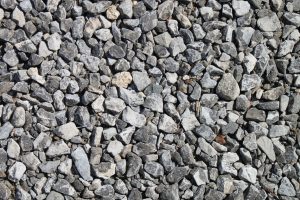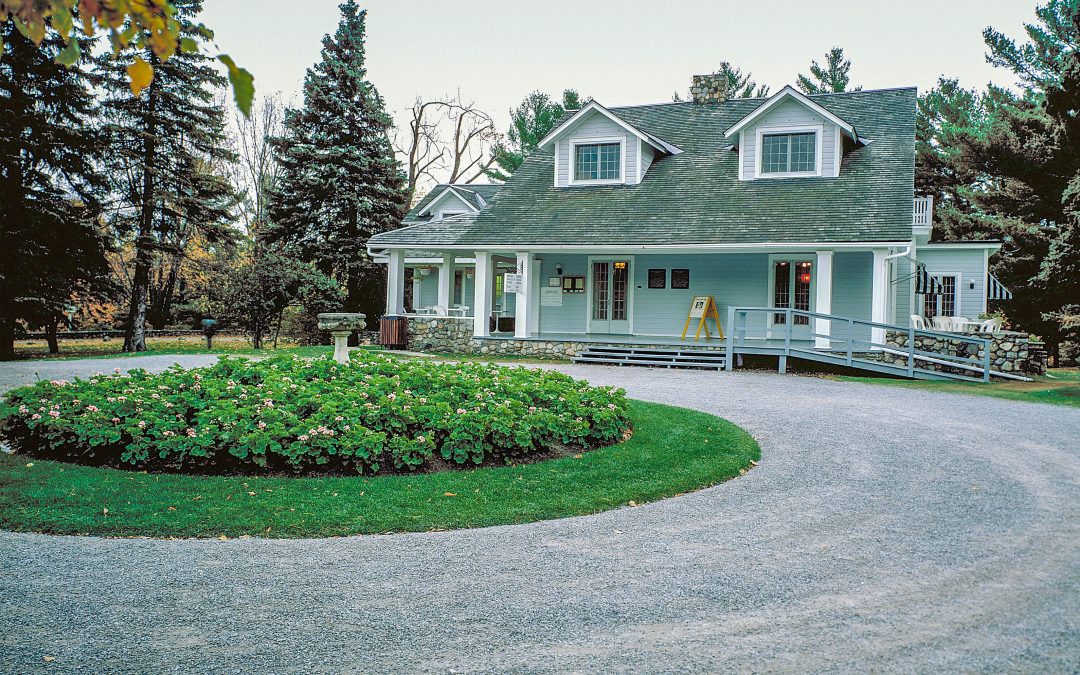By SUNG BIN PARK
One of the more common materials used in driveways today is gravel. An old standby, its appeal is a natural and simple look. Some people choose gravel because of its price point compared to options like asphalt pavement. If you are thinking about using gravel for your driveway or walkway, here are some items to consider for its installation and maintenance. When choosing gravel, size does matter. There are many different types of gravel, an aggregate of stone, and various sizes.
 According to Richard Vicino of Hi-Way Concrete, “If the stone is too small, such as three-eighths inches, then the stone will lodge into the tires and you spend more time pulling stone out of the treads.” You need to use the right size for the job. “Often we find three-quarter-inch crushed stone works best as it is an angular cut that allows the stone to interlock and compact better,” said Mr. Vicino, who also supplies “a dense grade which is a mixture of three-quarters-inch stone and various fines that can act as a hard pack as a base if the current substrates require additional material to support the weight of vehicles.”
According to Richard Vicino of Hi-Way Concrete, “If the stone is too small, such as three-eighths inches, then the stone will lodge into the tires and you spend more time pulling stone out of the treads.” You need to use the right size for the job. “Often we find three-quarter-inch crushed stone works best as it is an angular cut that allows the stone to interlock and compact better,” said Mr. Vicino, who also supplies “a dense grade which is a mixture of three-quarters-inch stone and various fines that can act as a hard pack as a base if the current substrates require additional material to support the weight of vehicles.”
Choosing stones too large, say greater than 1½ inches, will also damage tires, said Paul Lorusso, one of the owners of Cape Cod Aggregates Corporation. He added, at least three-quarters inch is a good size for driveways. Some of the more local and popular types of stone available are native stones of Cape Cod and bluestone, which are bluish in color for those looking for more dramatic curb appeal. It really all comes down to preference and aesthetics, he said.
Regarding installation, make sure there is proper leveling and correct sloping, Mr. Vicino said, noting, “Drainage and pitch are important to ensure proper run off.” Gravel driveways can help with stormwater runoff and water pollution when they are suitably installed to drain and allow the water to be absorbed back into the soil and not back out into our water sources, he said.
Go Green Landscape Supply’s yard manager, Dick Cushman, also emphasized compaction when installing gravel driveways. Compaction is important when you are using gravel and “a good compactor is going to maintain its integrity the best,” he said. When installing, use a heavy plate compactor—“one that takes two people to lift,” Mr. Cushman said. This will help keep gravel in place longer. You also have to deal with the “nature of erosion.” Borders and edges should not be overlooked for containing gravel driveways such as using “cobblestone aprons, especially in areas where cars accelerate out of the end of driveways.” Otherwise, you may lose more gravel in the long run.

Courtesy Scott E. Spencer
Once you have the gravel installed, maintenance is necessary, as the gravel will shift and move over time. Mr. Vicino said, “Maintenance is usually annual weeding and weed spray to help keep down vegetation, depending on how often the driveway is used. Over time the driveway will require a top dressing, or refresh of stone, every two to three years to keep the edges and overall appearance clean and sculpted.”
Dust from gravel can be an issue in drier conditions, as vehicles may kick up more dust near the home. Also, as gravel sinks or creates ruts in high trafficked areas or where heavy rain occurs, you will need to address it by filling in those uneven surfaces periodically. Snow plowing is also going to remove more gravel. As Mr. Lorusso put it, the best way to maintain a gravel driveway is to replenish the gravel when more snow plowing occurs. Luckily, he said, last winter wasn’t quite as bad for snow. But it is something to be mindful of in heavier snow seasons.
Driveways are not the only areas for showcasing gravel. Landscaping with stone offers a “very clean and neat look,” Suzanne Apellaniz of Artistic Garden Design said. “Use it mostly around buildings or wooden structures, such as between your house and the planting beds around your house, to keep your house dry. Or around wood posts in the ground for a deck or arbor so the wood doesn’t rot as fast.” For gardens she uses it as “mulch for plants that prefer dry conditions such as lavender, thyme, succulents. And then it is often used for walkways.” She chooses a particular type of natural stone in her work. “Here in New England I only use granite. That is what this part of the country is made of and it is readily available,” she said.
On the Cape, there are plenty of homes with driveways filled with crushed seashells. Aged shells have low odor and will compact similar to stone but the resilience of gravel can also blend well with our local weather conditions. You can use gravel to keep certain areas near homes dry. Ms. Apellaniz said, “Being a temperate climate we get a fair amount of precipitation and build our homes with wood, so we need to protect that wood.”
Visually, gravel can add instant curb appeal, especially in homes where larger driveways dominate the scene. One of the benefits of gravel is its ability to be moved and shaped into any form of driveway your imagination can come up with. Once it is installed well and taken care of, you can enjoy its benefits for years to come.

